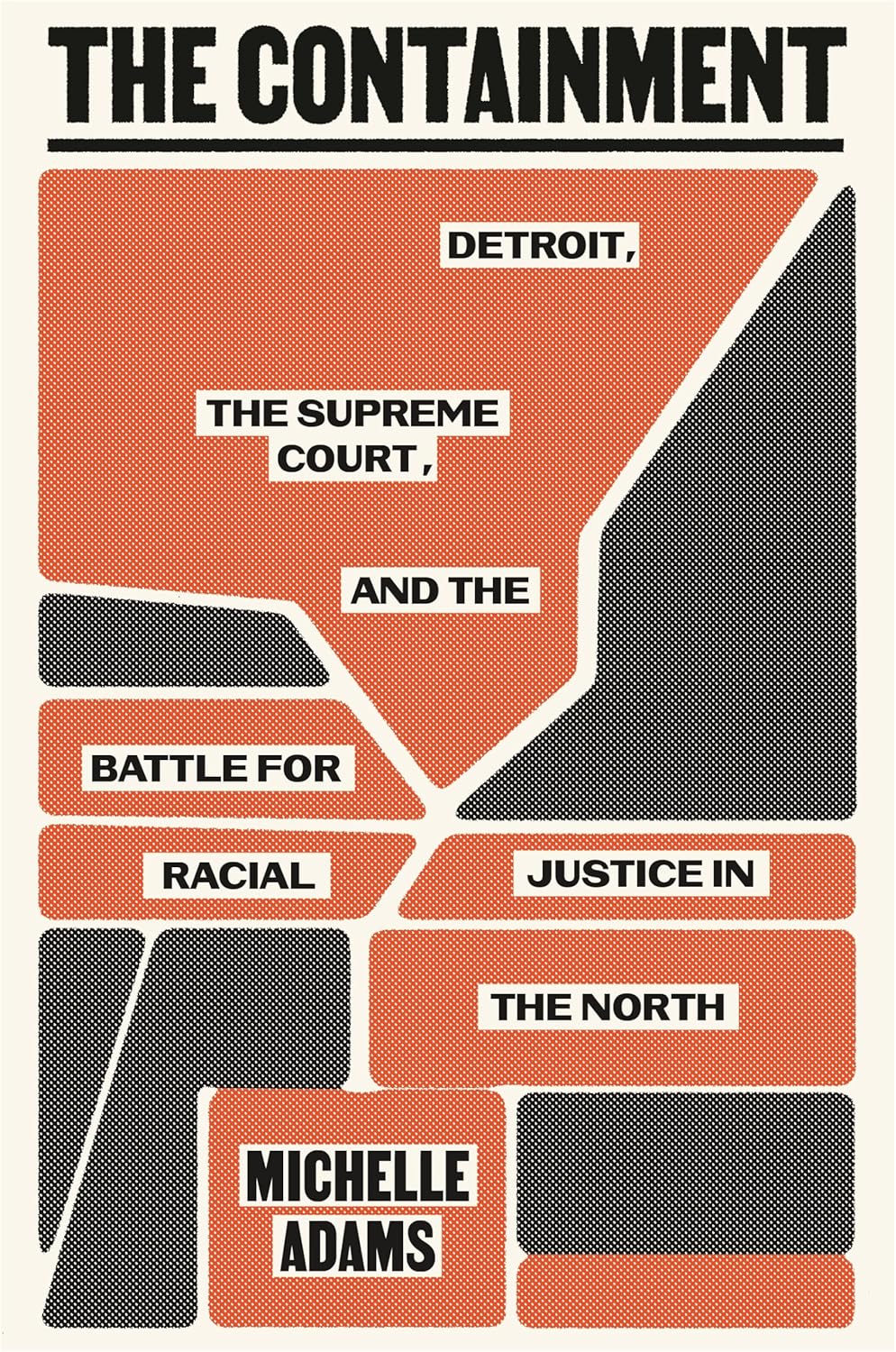The Containment: Detroit, the Supreme Court, and the Battle for Racial Justice in the North
- By Michelle Adams
- Farrar, Straus and Giroux
- 528 pp.
- Reviewed by William Rice
- February 5, 2025
How the fight for equitable education played out in 1970s Michigan.

Reasoned argument promising broadscale government remediation of public ills seems so alien to our current political moment as to be almost incomprehensible. Yet that’s what The Containment: Detroit, the Supreme Court, and the Battle for Racial Justice in the North actually offers us. Author Michelle Adams’ meticulous account of the 1970s school-desegregation case that almost ended — but didn’t — educational apartheid in Michigan’s largest metropolis and potentially across the entire North feels nostalgic in its focus on real problems, concern for justice, and reliance on facts. But believe it or not, kids, that’s what politics and policy used to be about!
The U.S. Supreme Court had ruled in its groundbreaking 1954 Brown v. Board of Education decision that segregated schools were unconstitutional. But it wasn’t clear if the prohibited segregation had to be legislated (de jure) as it was in the cases from the school districts that made up Brown, or if racial imbalance in and of itself (de facto) was impermissible. Detroit’s schools, like those of most Northern systems, were deeply divided by race, but there’d never been a law mandating they be so.
In 1970, the NAACP sued the Detroit school board and, crucially, the state of Michigan, charging that those public bodies had denied Black children a decent education through constitutionally banned segregation. This came after a raucous few months in which the board — under different, progressive leadership — had introduced a modest integration plan, only to face intense blowback from white parents.
The case, Milliken v. Bradley, was assigned to a federal judge who, while considered fair, had never shown any particular pro-integration tendencies. In one of the most remarkable events recounted in the book, Judge Stephen Roth was transformed into an aggressive integration proponent thanks to the mountain of convincing evidence the plaintiffs marshalled to prove conscious public efforts to keep Black kids out of white schools and Black families out of white neighborhoods.
Understanding the symbiotic relationship of the two phenomena — educational and residential segregation — was key to the case. Black families, effectively barred from white neighborhoods, were clustered in central cities. Black children were assigned to the schools built in these segregated communities. These became “black schools” that any remaining white parents wanted to avoid, often by moving away to new areas unwelcoming to Black families.
As the Black population grew, adjoining areas were ceded to them, but they were always just out of reach of the retreating white majority and their superior schools. This is the “containment” of the book’s title. By the 1970s, the containment line in the Detroit metropolitan area had effectively become the Detroit city boundary.
Public officials created this segregation even if they never tacked up a “whites only” sign. Federal housing authorities had drawn maps identifying Black neighborhoods as undesirable areas for housing development (“redlining”). White real-estate agents licensed by the state of Michigan wouldn’t show Black homebuyers houses in white neighborhoods and wouldn’t let Black real-estate agents into their professional society. Boundary lines were drawn by the Detroit School Board that ensured Black students would attend Black schools, even if a white school was closer.
Because there were so few white students left within city limits, a desegregation plan that excluded the suburbs would accomplish little. So Judge Roth ordered a “metropolitan” solution that included dozens of adjacent school districts. This caused another predictable white uproar, including appeals that eventually made it to the U.S. Supreme Court. There, the new conservative majority created by President Richard M. Nixon struck down the area-wide solution on the theory that the suburban districts had not practiced overt discrimination — thereby ignoring the more complex causality the plaintiffs had so skillfully explicated. Twenty years after the Brown decision, the court’s decision in Milliken v. Bradley effectively ended meaningful efforts at school integration nationwide.
Adams is a conscientious chronicler of this disheartening story, even if, at times, the narrative carries the dutiful tone of a research paper. She can also be guilty of stating the obvious (e.g., Martin Luther King’s “integration philosophy was deeply tied to his abhorrence of segregation”).
So much has happened in the half-century since Milliken — the rise of the Black middle class, hip-hop culture, the first Black president, Black Lives Matter — that fights over integration may seem dated. Even at the time, Adams reports, Black parents were often torn on the issue: Did they really want their kids to go to white schools where they would get a better education but also a frosty if not downright hostile reception, or did they just want better Black schools?
But Adams makes the case that integrated schools are better for everyone: Black children, white children, society as a whole. Mixing with kids from higher-income families (since race and class are still closely tied) can raise the expectations and opportunities for lower-income Black kids, while white kids can shed some of their baked-in prejudice.
Adams cites some hopeful recent progress toward race-neutral schools but offers this sobering reality check:
“Since 1990, [school] segregation has increased in every part of the country. Today, most American children attend racially segregated schools.”
William Rice is a writer for political and policy-advocacy organizations.

_1.png)